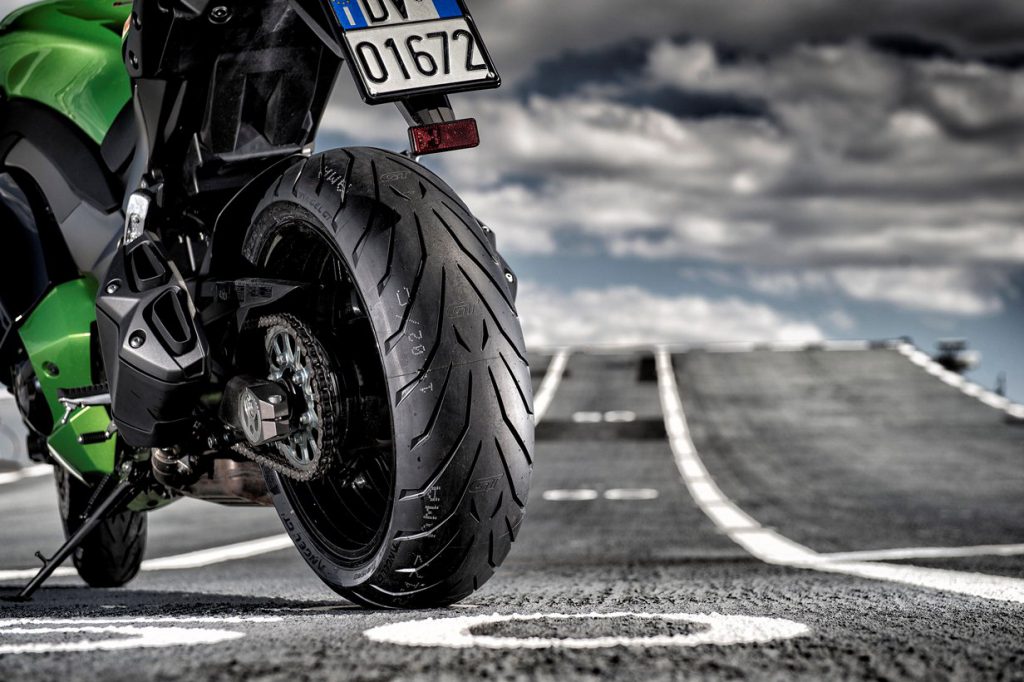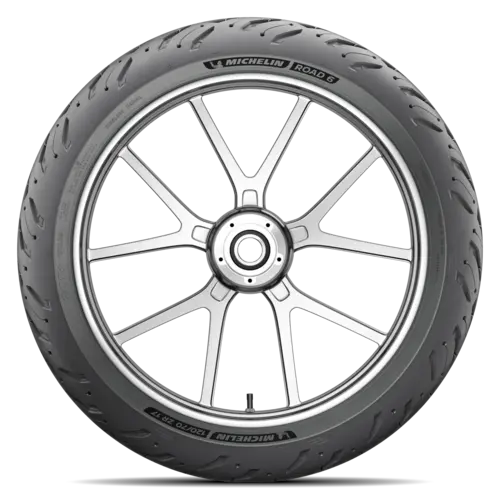Everything about the Necessary Motorbike Tire Guide for Ideal Bike Maintenance and Efficiency
The Crucial Bike Tyre Guide offers as a vital resource for motorcyclists seeking to boost their bike's efficiency and safety. motorcycle tyre guide. It provides understandings right into different tyre kinds and requirements that influence taking care of and durability. Furthermore, recognizing correct upkeep techniques can considerably extend tyre life. Several riders forget critical aspects that impact their riding experience. Exploring these facets can bring about notified decisions that ultimately improve both safety and security and satisfaction when traveling
Comprehending Bike Tyre Kind
When selecting motorbike tyres, comprehending the various kinds offered is essential for peak performance and security. Motorcyclists encounter different tire groups, each designed for certain riding designs and problems. Sport tyres stress grip and responsiveness, making them appropriate for high-performance bikes and track usage. Touring tires, on the various other hand, emphasis on toughness and comfort, perfect for long-distance rides. Off-road tires feature hostile step patterns, providing traction on unequal surface areas, while dual-sport tires provide convenience for riders who shift in between off-road and on-road conditions.Additionally, cruiser tires are made for security and a smooth ride, accommodating the distinct requirements of cruisers and visiting bikes. Comprehending these categories allows bikers to choose tyres that align with their riding routines and environmental conditions, eventually boosting both safety and security and efficiency. Each kind plays an important role in making sure a premium riding experience customized to the private motorcyclist's requirements.
Trick Tyre Specs Described
Choosing the ideal motorcycle tires includes even more than just understanding the various kinds; it additionally calls for experience with crucial specifications that affect performance and safety and security. Secret specifications consist of tire size, which is commonly expressed as a collection of numbers showing width, facet ratio, and edge size. This code is essential for guaranteeing compatibility with the motorcycle.Another vital requirements is the load index, showing the optimum weight a tire can sustain. The speed ranking represents the maximum speed a tire can securely deal with, vital for performance enthusiasts.Additionally, walk pattern and rubber compound influence hold, stability, and wear qualities. Tires with a softer substance tend to offer much better hold but wear faster, while tougher compounds last longer yet may give up traction. Understanding these specs permits riders to make educated choices, improving both their safety and security and riding experience.
Exactly how to Select the Right Tyres for Your Bike
Just how can a rider guarantee they select the right tires for their motorbike? Picking the suitable tires involves comprehending the details needs based upon riding surface, style, and weather problems. Cyclists need to initially speak with the motorbike's handbook to determine recommended tyre sizes and specifications.Next, they should assess the sort of riding they intend to do-- whether it's travelling, touring, or off-road. Each classification has distinctive tyre styles tailored for top performance.Additionally, cyclists ought to evaluate step patterns; deeper footsteps supply much better hold in wet problems, while shallower treads boost security on completely dry surfaces.Lastly, it is essential to take a look at the tyre's construction and material, as these factors influence sturdiness and handling (motorcycle tyre guide). By reviewing these aspects thoroughly, a rider can with confidence select tyres that enhance security, efficiency, and total riding experience
The Significance of Tyre Stress and Maintenance
Tyre stress is a substantial element of bike upkeep that directly influences security and efficiency. Preserving the proper tire pressure assurances optimal contact with the road, boosting grasp and security throughout trips. Under-inflated tyres can bring about enhanced rolling resistance, leading to inadequate gas effectiveness and undue wear on the tires. On the other hand, over-inflated tyres might trigger a severe adventure and lower grip, particularly in wet conditions.Regularly checking tyre stress, ideally before each trip, is crucial to preserving the motorbike's general performance. Motorcyclists must refer to the supplier's specifications for the recommended pressure levels. Additionally, monitoring tyre condition and adjusting pressure according to tons and riding problems is crucial for safety. Correct tyre upkeep adds to expanded tire life-span, far better handling, and boosted stopping performance. Eventually, regular focus to tyre pressure and upkeep is essential for guaranteeing a delightful and secure riding experience.

Acknowledging Indications of Tyre Wear and Damage
Identifying indicators of tyre wear and damages is necessary for maintaining motorcycle security and performance. Trick indicators include examining walk deepness and carrying out a thorough visual evaluation for any type of noticeable damages. Resolving these factors promptly can protect against more difficulties on the roadway.
Tread Deepness Analysis
As riders take to the roadways, the value of reviewing walk deepness can not be overemphasized, considering that used or damaged tires can substantially affect safety and security and performance. Tread depth directly influences grip, braking distance, and cornering stability. To evaluate step depth, motorcyclists should use a step deepness gauge, measuring the grooves at various factors throughout the tire. A deepness of 2mm or much less indicates substantial wear and demands instant substitute. In addition, cyclists can utilize the "cent examination" by inserting a coin into the walk; if the top of Lincoln's head shows up, the tire is also worn. Regular checks ensure peak grasp on diverse road problems, advertising a safer riding experience while improving the general handling of the motorcycle.
Visual Damages Inspection
Evaluating motorbike tires for aesthetic damages is necessary for maintaining safety on the roadway. Motorcyclists need to on a regular basis examine tyres for indications of wear such as fractures, protrudes, or slits. Uneven wear patterns might show positioning issues or incorrect rising cost of living, bring about compromised performance. Additionally, looking for foreign objects installed in the walk can protect against potential blowouts. Cyclists ought to pay close focus to the sidewalls, as any abrasions or cuts can weaken the tire's framework. Making sure that the step is devoid of excessive wear is crucial for ideal grip. Normal aesthetic inspections not just improve security however likewise prolong the life of the tyres, making certain a smoother and more reputable riding experience. Timely detection of damage can stop costly repair services and mishaps.
Seasonal Tyre Factors To Consider for Various Riding Conditions
When thinking about motorcycle tires, seasonal conditions play a vital duty in performance. In damp weather condition, tires created for enhanced grip and water displacement become necessary for safety and security. In addition, winter season riding needs details tire characteristics to guarantee peak traction on cool, potentially unwelcoming surface areas.

Damp Weather Condition Performance
Damp climate conditions existing special obstacles for motorcyclists, making the option of tyres important for security and performance. Tires created for damp weather condition commonly feature much deeper footsteps and specialized rubber compounds that enhance hold on slippery surface areas. These tyres are crafted to direct water away, decreasing the threat of aquaplaning and enhancing stability throughout rain. Motorcyclists need to consider tyres with a well balanced layout, supplying both traction and durability in wet conditions. Additionally, maintaining correct tire stress is crucial, as under-inflated tyres can jeopardize performance. Regular inspections for wear and damages are necessary to ensure peak feature when faced with rain-soaked roadways. Selecting suitable wet-weather tyres eventually adds to a safer and a lot more enjoyable riding experience.
Winter Tyre Needs
Riding in wintertime conditions postures distinct difficulties that necessitate certain tire needs to guarantee security and useful source efficiency. Winter bike tyres are designed with deeper footsteps and softer rubber substances, offering improved grip on cold and slippery surface areas. This is essential for maintaining grip on ice, snow, and wet roadways. Furthermore, wintertime tyres commonly feature an unique walk pattern that helps network water away, minimizing the risk of aquaplaning. Riders must additionally consider the tyre's temperature resilience, as performance can lessen in extreme cold. It is very important to on a regular basis check tyre pressure, as it can go down significantly in reduced temperature levels. By choosing the suitable winter season tires, cyclists can browse harsh problems with higher self-confidence and stability, ensuring a much safer riding experience.
Tips for Correct Tire Storage and Durability
Appropriate tyre storage space is crucial for preserving their long life and performance with time, as overlooking this element can bring about early degeneration. To guarantee optimal storage, it is necessary to maintain tires in a great, dry environment away from straight sunshine and resources of warm, such as radiators or heating systems. Excessive warm can cause rubber compounds to damage down, compromising the tire's integrity.Additionally, tires should be saved upright or stacked horizontally, relying on their type. It is advisable to turn them regularly to stop level places if stacked. Correct rising cost of living is also essential; tyres need to be inflated to the manufacturer's advised pressure to avoid deformation.Lastly, it is useful to cover tires with a protective product to secure them from dirt and contaminants. Complying with these ideas will certainly aid expand the life of motorcycle tires, guaranteeing they remain risk-free and efficient for usage when the riding season resumes.
Frequently Asked Concerns
Just how Usually Should I Change My Bike Tyres?

Can I Mix Different Tyre Brands on My Bike?
Mixing different tire brands on a bike is typically not suggested. Variations in step patterns, rubber compounds, and performance attributes can lead to unforeseeable handling and compromised security, potentially boosting the danger of mishaps.
What Is the Life expectancy of a Bike Tire?
The life expectancy of a bike tire typically ranges from 5,000 to 15,000 miles, influenced by elements such as riding style, terrain, and tyre upkeep. Normal inspections can aid ensure peak efficiency and security throughout their usage.
How Do I Deal With Old Motorcycle Tyres?
When taking care of old bike tyres, they ought to be taken to marked recycling facilities. Many regional waste monitoring services also supply tyre disposal programs, making sure eco-friendly handling and conformity with regional laws concerning tire waste.
Exist Any Type Of Tire Warranties Readily Available for Motorbikes?
Numerous bike tire producers offer warranties that cover flaws in product and handiwork. The specifics vary by brand and model, so it's crucial for bikers to examine private warranty terms before buying new tires. Off-road tires feature hostile walk patterns, offering grip on uneven surface areas, while dual-sport tires offer convenience for motorcyclists that shift in between on-road and off-road conditions.Additionally, cruiser tyres are created for stability and a smooth trip, providing to the special requirements of cruisers and touring bikes. Each category has distinctive tire designs tailored for optimal performance.Additionally, bikers should assess walk patterns; deeper footsteps supply better hold in damp problems, while shallower footsteps boost stability on dry surfaces.Lastly, it is important to check out the tyre's construction and product, as these variables influence sturdiness and handling. Appropriate tire upkeep contributes to prolonged tyre lifespan, far better handling, and boosted braking performance. Correct rising web cost of living is additionally important; tyres must be image source pumped up to the supplier's suggested pressure to prevent deformation.Lastly, it is valuable to cover tires with a safety product to shield them from dust and pollutants. The lifespan of a bike tire usually varies from 5,000 to 15,000 miles, influenced by factors such as riding terrain, style, and tyre maintenance.